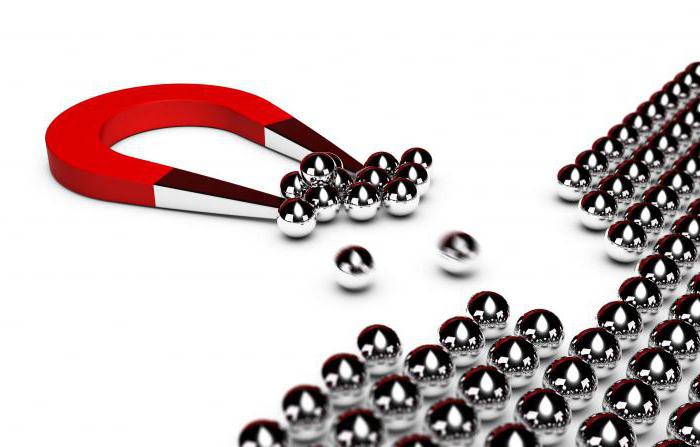The Law “On Trademarks and Service Marks” of 09/23/1992 by a trademark means nothing more than a designation that, in one way or another, is able to distinguish respectively the services and marketable products of some individuals or legal entities from homogeneous services and marketable products of other physical and legal entities. How to implement a trademark assessment? What does it depend on? How are trademark rights registered? You can find answers to these and other equally interesting questions when reading the materials in this article.

Assessment procedure
The assessment of the type of intellectual property under consideration is carried out on the basis of analysis of the sale of marketable products and services, as well as the production of the corresponding company. Evaluation of a trademark involves the identification of the market value of the object of evaluation by analyzing the significance of the impact of intellectual property objects listed above on the consumer. One way or another, this makes it possible to distinguish commodity products and services of the structure from similar commodity products and services, as well as provide additional revenue and profit. Today, the valuation of a trademark or service mark in market conditions is carried out in the following cases:
- Sale of the object.
- Valuation of a trademark upon contribution to the authorized capital.
- Transfer of a trademark, service mark or trademark to the right to use in accordance with a franchising agreement.
- Determining the amount of damage that was caused to the copyright holder through the illegal use of intellectual property listed above.
Trademark Registration
As it turned out, any example of a trademark is a designation that is placed on the packaging or directly on the commercial products in order to individualize the product and its seller (manufacturer). Trademarks are:
- Verbal (as a rule, this includes words; letter combinations that are endowed with a verbal character; sentences; phrases; other linguistic units, as well as their combinations).
- Graphic designations (usually this includes images of objects, living things, natural and other objects, as well as figures of absolutely any compositions, lines, shapes, figures on a plane, spots).
- Three-dimensional (as a rule, this includes an object of three-dimensional display, figures, as well as combinations of lines and figures).
- Combined (usually included here are combinations of elements belonging to different groups: graphic, verbal, voluminous).

What affects the rating?
It is also important to note that the name of the product and the corresponding trademark are industrial property objects that implement the functions of advertising and quality assurance. The most significant features that affect the evaluation of a trademark are the following points:
- Recognition in relation to the target segment of consumers.
- Territorial prevalence, both in Russia and abroad.
- The direct relationship of the consumer to marketable products and services.
Assessment of the value of a trademark is determined by such integral characteristics as the volume of sales, profit of the structure that is provided by this particular trademark, and so on.Today, in a practical aspect, the cost of a well-known brand often exceeds the value of the assets of a material company. It would be worthwhile to mention such an example of a trademark as Porshe. It is important to add that it is high cost that is the most powerful tool in terms of competition and the struggle for the consumer.
Implementation of the assessment: rules for conducting
Evaluation of a trademark is made according to special rules. So, in any case, the appraiser needs to receive detailed information about the owner-company (or user), as well as information regarding the specifics of the production and sale of marketable products of the brand being evaluated. Today, the value of a brand is determined by the following financial indicators:
- Sales volumes of marketable products.
- Profit of the trademark owner.
- Costs related to maintaining and maintaining a trademark.
- Opportunities in terms of prospects for market expansion and increased sales.

Required documents
As it turned out, a trademark is valued through the efforts of an appraiser. So, to implement the procedure, he will need the following documentation:
- Certificate of registration of a service mark or trademark.
- Brief characteristics of commercial products (services) manufactured under the evaluated trademark (service mark).
- Brief characteristics of the relevant market for marketable products (services).
- A brief description of the areas of commercial use of a trademark (service mark).
- A business plan for the commercial use of a brand name or service mark, which necessarily indicates the planned gross revenue of the necessary costs, investments, net profit and other categories by year. It is important to know that a business plan has a big impact on a trademark’s rating. One way or another, it must be approved by the leadership of the structure.
- Costs incurred in connection with the formation of a trademark or service mark.
- Costs associated with such a category as protection of a trademark (service mark).
It is important to know that the specified documentation should be provided to the appraiser in the form of copies, which are certified by means of the seal and signature of the authorized person (as a rule, they are the customer of the assessment). In addition, it can also be notarized.

Search for trademarks by their rating
In the ranking of trademarks in accordance with the latest data, the places were distributed as follows:
- Apple has a leading position. By the way, for the sixth time in a row. It is not surprising, because the company annually invests $ 1.8 billion in advertising.
- Confident second place belongs to the Google brand. This search network is the most multi-user in the United States. In this case, advertising costs amount to 3.2 billion dollars annually, which is relatively large in a relative aspect.
- Third place is taken by the Microsoft brand name. Advertising investment here reaches $ 1.9 billion.
- The fourth position was taken by the world-famous and beloved by many Coca-Cola. This company spends about four billion dollars a year on advertising.
- Searching for trademarks in fifth place puts Facebook. Interestingly, in comparison with the previous year, the structure rose by five positions. It should be noted that advertising costs here amounted to 281 million dollars.
Detailed information on domestic marks can be provided by the state register of trademarks. It is there that all the information necessary for acquaintance is stated.

Functional
As you know, the name of the product in some way reflects the trademark. In addition to this, it performs the following functions:
- Distinctive.
- Identification function.
- Advertising.
- Individualizing function.
- Warranty
- Security function.
- Psychological.
- Additional functions.
It will be advisable to consider the functions presented in a separate manner. Thus, by means of a distinctive function, on the basis of inscriptions and signs, the manufacturer or seller of a certain commercial product is designated. This function contains the main property, because the brand name at the initial stages was formed and put into circulation so that the consumer could distinguish the product of one manufacturer from the marketable products of another. The implementation of such an interesting function is carried out by creating a catchy and well-remembered brand name. By the way, the provision presented to the same extent applies to graphic and verbal signs.
An information function is also called an identification function. It allows you to identify objects on the basis of their characteristic distinguishing features. This function is in close interaction with the distinctive. Thus, recognition of identity in any case distinguishes a structure, marketable product or service from others that are somewhat similar. The logo allows the consumer to understand where a particular product comes from, as well as identify it and relate it directly to the manufacturer. The trademark should clearly and unequivocally convey information to the consumer about the manufacturer of the product. By the way, when the sign is a continuation of the brand name, the information function is performed many times more efficiently.

Individualizing, advertising and warranty
The individualizing function allows you to highlight a specific product. So, from a large number of units of marketable products, the buyer stops his own choice on any particular product. One way or another, he prefers directly to the company that produces this product or service.
The advertising function has a close relationship with the distinctive. So, in an actively promoted trademark, it serves as an independent advertisement of the product on which it is fixed. In order for a brand to perform its own functions effectively, it must be endowed with a number of distinctive characteristics: be recognizable, be fixed in the most visible places of the product itself, should not cause negative associations with the buyer, it can easily be included in advertising of light nature and other features.
The warranty function has several names. So, it is often called quality or stimulating. The implementation of the function consists in the fact that by fixing the own mark on the product, the manufacturer certifies the quality of its marketable products. This function, one way or another, encourages the manufacturer to keep the quality of his product at a high level. In addition, the buyer is given a guarantee. It is worth knowing that the low quality of the product in any case discredits the brand name that is recorded for the corresponding product. It will serve more as an anti-advertisement than a real high-quality advertisement.
Security and psychological
Trademark protection is the most important function in this system. Through the security function, products manufactured by one or another manufacturer are protected from fakes. The protective function is implemented by the efforts of the state through the provision to the owner of the brand name of the exclusive right associated with its use for their own products. It is important to note that violators who attempt to illegally affix a mark registered by another owner on their goods are prosecuted.
The psychological function is next to the advertising and warranty.So, if a consumer has noticed a familiar brand name that has positively established itself in the market, as well as in the minds of the buyer directly, he automatically believes that a product that is distinguished by this logo is endowed with high quality.

Additional functions
Among the additional functions of the brand name, it is advisable to distinguish the following elements (they are endowed not so significant than the previous paragraphs, but still an important role):
- Giving the image and prestige of the buyer of a particular brand. Everyone knows that today the use of products with a certain trademark plays a significant role in relation to the image of the consumer of one or another social circle, social status, attributing it to an elite or professional group.
- Facilitation of memorization and identification of marketable products.
- Naming individual products. It is much easier for the consumer to pronounce and perceive the printed word mark than to formulate a picture in words. Thus, buyers often designate trademarks as the names of goods, which attracts new customers and, of course, stimulates sales.
- Facilitating the memorization of a product or product of a particular brand. This criterion, one way or another, contributes to the modern methodology in the formation of a trademark. Thus, brand names are often endowed with a small number of color elements and a minimum number of graphic shapes. The main purpose of this, as was noted, is to facilitate the memorization of the brand, because with this approach, fixing in the customer’s memory is many times more effective.
- Raising the fame of the area.
- Stimulating and developing a desire from the consumer to purchase a particular product.
It is also interesting to note that today in the Russian Federation there is a rapid registration of trademarks of both domestic and foreign manufacturers of commercial products and services. Thus, with the firm and serious intention of the company to carry out entrepreneurial activity in the market of services and goods, it is necessary to develop a brand name for its products. After that, it must be registered as a trademark, because by implementing an advertising campaign and spending significant funds on this event, the owner of an unregistered trademark risks losing it. In this case, another businessman can use the already recognizable brand name. Therefore, brand registration is extremely important.